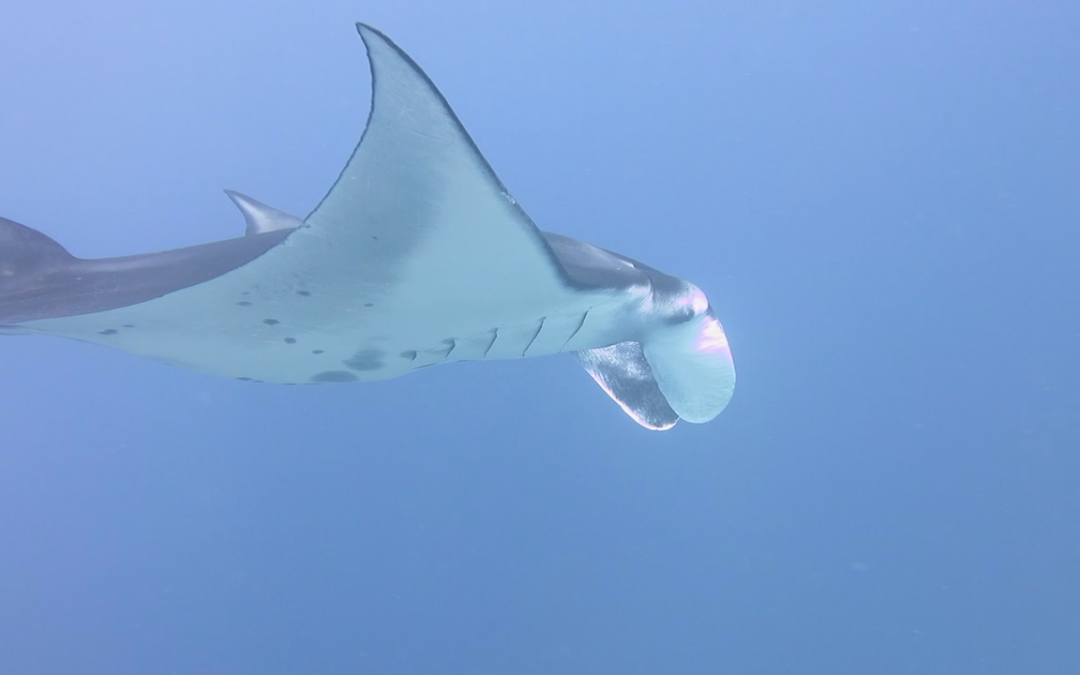After an entire week of learning theory in the classroom, we were all ready to get out into the field and put our theory into practice. Today was our chance, and we were very excited to see our first manta rays. West Flores is known as an important manta aggregation site, with a good chance to see manta rays in the wild. Not only is this a good location, it is also a good time. It’s manta month! The mating season is about to begin, and this is one of the best times of the year to find manta rays!
Our first dive was at Manta Point. On this dive we were not allowed to bring our cameras. It was our first manta survey, and we needed to focus on maintaining a good survey and communications under the water to keep our team safe in the strong currents, and we also needed to focus on following the Code of Conduct during our first manta encounters.
Manta Point is one of the divesites in Komodo National Park that is famous as a feeding area and cleaning stations for mantas. We really hoped to see mantas for the first time, and we were not disappointed. We found three reef mantas and one mobula ray! Even though we didn’t bring a camera, this was an extraordinary experience for all of us, and I will always have a picture in my memory.
We had found mantas for the first time, but we were not satisfied to stop there. Next we planned to visit Mawan, another famous manta cleaning station. As we approached the site our boat passed another group of divers who had just finished their dive and told us they had not found any mantas. A little disappointed, we began our dive. We found a blacktip reef shark, a whitetip reef shark and a hawksbill turtle. But we were starting to lose hope of finding mantas until, near the end of the dive, there they are! Four mantas dancing in the shallow waters. And one of them was pregnant! We quickly found a safe position to settle down near to the seafloor, following the Code of COnduct and giving the mantas lots of space to manoeuvre while we tried to capture photographs of the identification marks.
After our dives today, it was time to reflect on our experiences and all that we have learned. We met mantas for the first time today, and it has made us even more interested and raised many new questions. When is the best time of day to find mantas? Why do they visit these sites? I am excited for tomorrow and the new experiences and knowledge it will bring.


